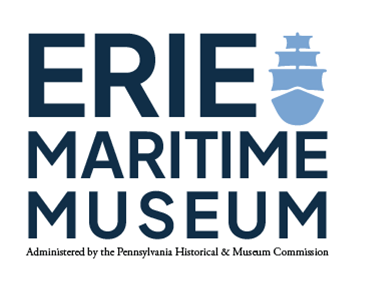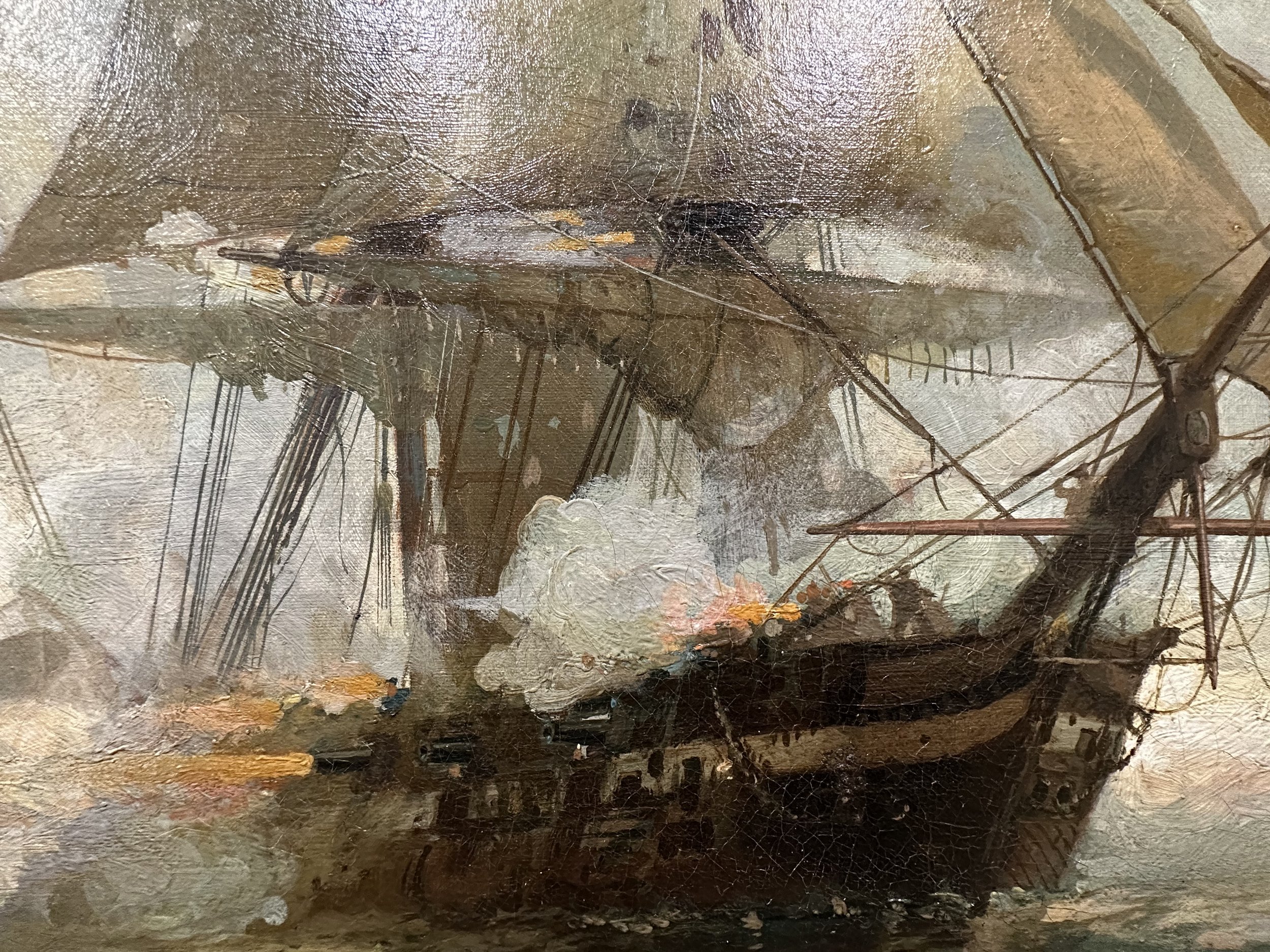The Battle of Lake Erie, 1885-87
Julian Oliver Davidson
The Artist
“To accurately paint past naval battles required not only great knowledge of naval architecture and of the sea, but a great deal of research into the actual details of the events”
Julian O. Davidson was born on December 17, 1853, to Matthias and Harriet (nee Standish) Davidson. His father was a civil engineer who, while Julian was “still a boy” was tasked to oversee the construction of the Havana Railroad. Julian made five trips to Cuba with his father and, on the final trip, the ship they were sailing on became shipwrecked in a severe storm. Rather than frighten Julian off of the water for good, he became infatuated with it.
As a teen, Davidson was sent to the Rectory School in Hamden, Connecticut - a college preparatory school modeled after a military academy. The curricula included military drill, Latin, math, science, literature, drawing, political history, and military history. At 16, when Davidson graduated, he became an apprentice in his father’s firm as a surveyor and draughtsman. Davidson’s eye was to the sea, however, and preferred to devote his time sketching ships coming and going out of New York Harbor.
With a burning desire to leave New York for life on the sea, Davidson “ran away” and joined the crew of SS Arizona - a sidewheel steamer that made voyages to the Far East via the Suez Canal. It is during his time aboard Arizona that his nautical eye began to come into focus. As Loren Bloom, of Maritime Collectors puts it, Davidson “[assisted] the engineer, ship's boy, and storekeeper”, returning home “with paintings and journals filled with sketches of sails, rigging, sailing ships, and water.” Rather than continue in his apprenticeship in the family business, Davidson moved into an apartment in Manhattan where he devoted two years studying under the watchful eye of famed Dutch artist, Mauritz de Haas. It is with de Haas that Davidson met fellow artists, Winslow Homer, Frederick Church, William Bradford, Albert Bierstadt, and Stanford R. Gifford.
For Davidson, he was often found visiting Nyack-on-the-Hudson, a place known for its shipbuilding industry. It is here that he met Cornelia Merritt. In 1877, the pair were married. Cornelia gave birth to a child who passed away shortly after birth. The couple built a “large home with expansive views on the Hudson River”. Julian and Cornelia were active in the Nyack Rowing Association and purchased a steam-powered launch named Princess.
Davidson was a prolific maritime artist, some critics even going as far as to describe him as one of the nineteenth century’s, “premier naval artists”. While many of his subject events occurred decades prior to his depictions, it is not known how he was able to research for his artwork. He was known to spend a great deal of time, often more than a year to research - this is true of his interpretation for The Battle of Lake Erie.
Unfortunately, his life was cut short when he developed strep throat - the virus ultimately damaged his kidneys. On April 30, 1894, at the age of 41, he passed away due to congestive heart failure. His burial route took him from Nyack to Yonkers, across the Hudson on a side-wheel steamer to Woodlawn Cemetery in Fordham, New York. He was buried next to his infant son.
Setting
the Scene
“At 45 minutes past two, the signal was made for “closer action”. The NIAGARA being very little injured, I determined to pass through the Enemy’s line; bore up, and passed ahead of their two Ships and a Brig, giving a raking fire to them from the Starboard guns, and to a large Schooner and Sloop from the Larboard [port] side, at half Pistol shot distance. ”
Davidson’s depiction of the Battle of Lake Erie was centered on the moment of O.H. Perry’s crossing of the British line. With the nautical eye of an experienced sailor, Davidson renders all of the navigational specifics with extreme accuracy. Firstly, the wind is filling the sails of each vessel from the southwest. Even more astonishing than that is the fact that the sun’s rays are accurately striking the sails on Brig Niagara in such a way that correctly indicates the time is around 2:45 pm. At this time, Perry’s relief flagship Niagara crossed the British line, severing it in two in a tactic known as “crossing the T”. Here, Perry packed his carronades with “double-shot”, firing a devastating blast of cannon fire toward the HMS Detroit and Queen Charlotte as well as HMS Lady Prevost.
Judging from the order of battle, we can presume the ships are as follows (from left to right): US Sloop Trippe, HMS Detroit, US Brig Caledonia, HMS Queen Charlotte, US Schooner Ariel, US Brig Niagara, US Schooner Scorpion, and HMS Lady Prevost.

Behind the Art
“Almost unique to his painting is the element of vigorous movement and vitality. Davidson’s method of applying the paint, with areas of glazing contrasting with areas of broad, sweeping brush strokes and gentle impasto, generates a feeling of life and action. His paintings are in reality as vital, powerful, and forceful as was the man himself”
Davidson’s Technique
Visitors to the Erie Maritime Museum are able to view this brilliant piece up close. The eight-foot-wide painting provides a great deal of detail, granting patrons a chance to view the climax of the Battle of Lake Erie as if there on that fateful day.
Davidson was able to interact with a variety of artists during his time, combining techniques from three of the major Western maritime art styles - the Dutch, English, and American schools.
Influences: Dutch School of Art
From a wide perspective, the trained eye is able to determine the influence of Dutch maritime art. John Wilmerding describes this style as capturing four primary elements including an overall pyramidal composition of ships, attention to atmospheric conditions, a low horizon line, and water in the foreground - all of which you can discover in the images below.
1) A Pyramidal Composition of Ships
2) Low Horizon Line
2) Attention to Atmospheric Conditions
2) Water in the Foreground
Influences: English School of Art
When we zoom into the scene, Davidson’s inspiration from English maritime artists comes into focus. Loren Bloom of Maritime Collectors points out the following: viewers of this piece will then view the “figurative scenes within the composition…sailors climbing the rigging, sharpshooters firing from stations in the sails.”
Influences: American School of Art
Lastly, Davidson has been described as the “last true heir to the Hudson River tradition”. With The Battle of Lake Erie in particular, viewers turn their attention to the scenes of combat on the water, the relatively flat nature of the water around the ships (typical of Western Lake Erie) - the “relationship between people and nature”.

USS Constitution in Action Against HMS Guerriere
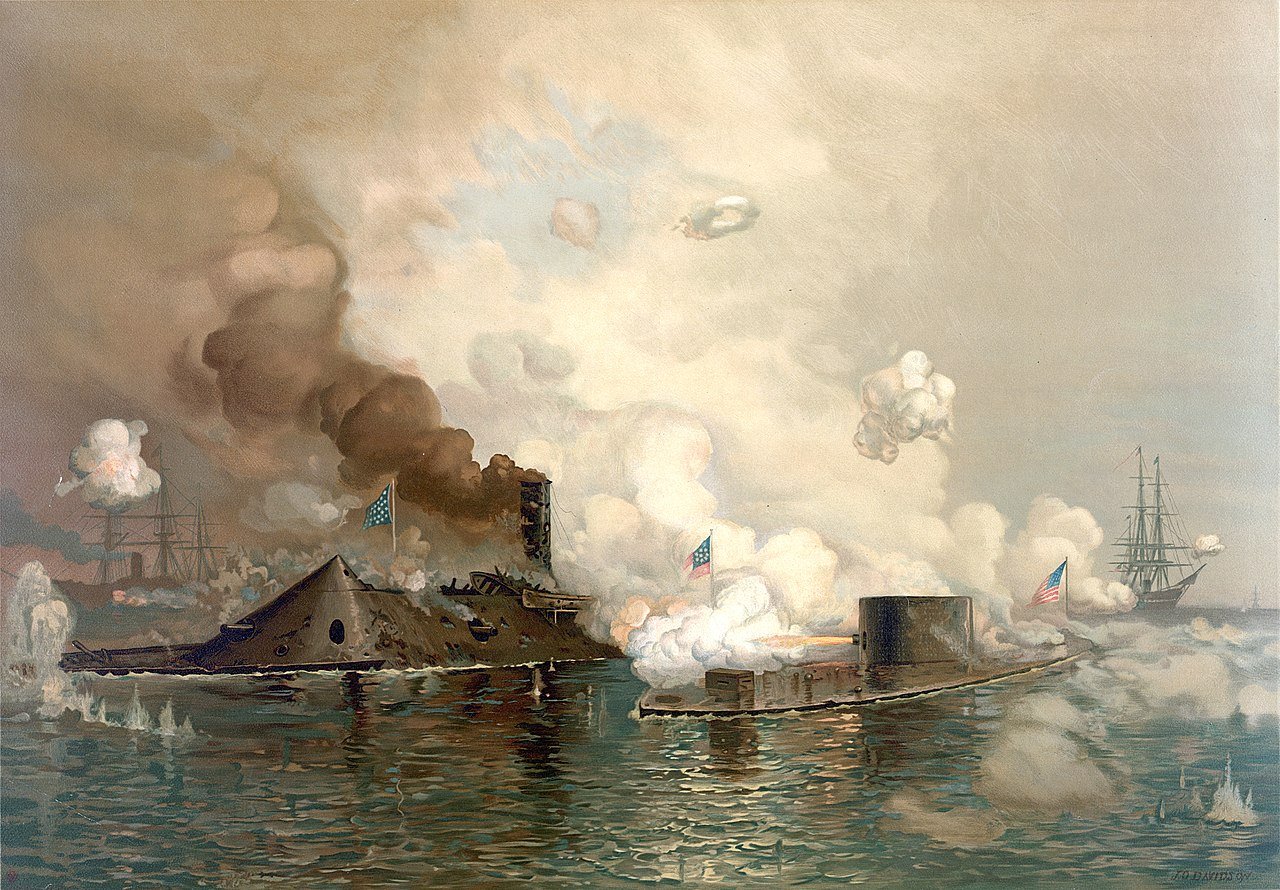
The Monitor and Merrimac

Kearsarge and Alabama
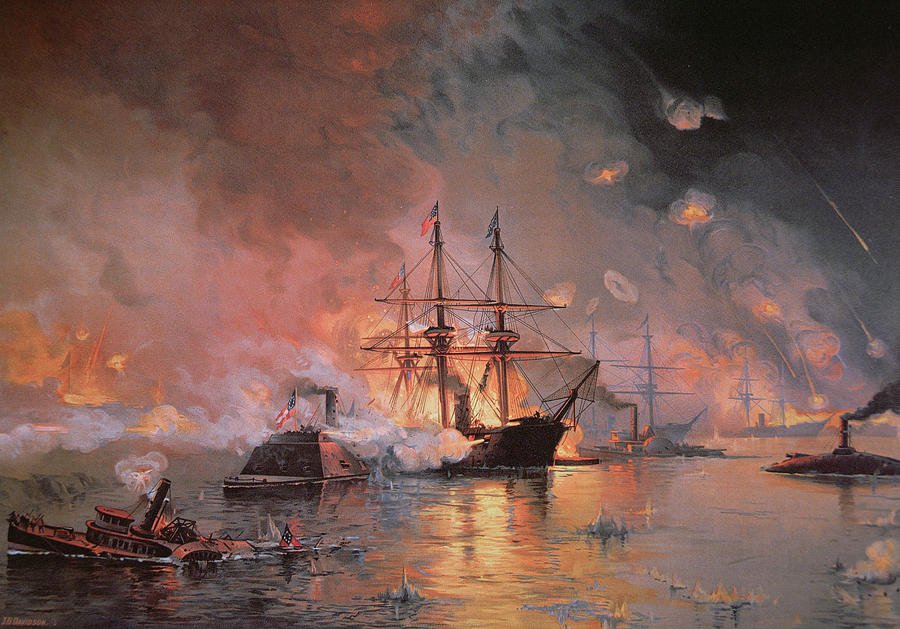
Capture of New Orleans, 1862
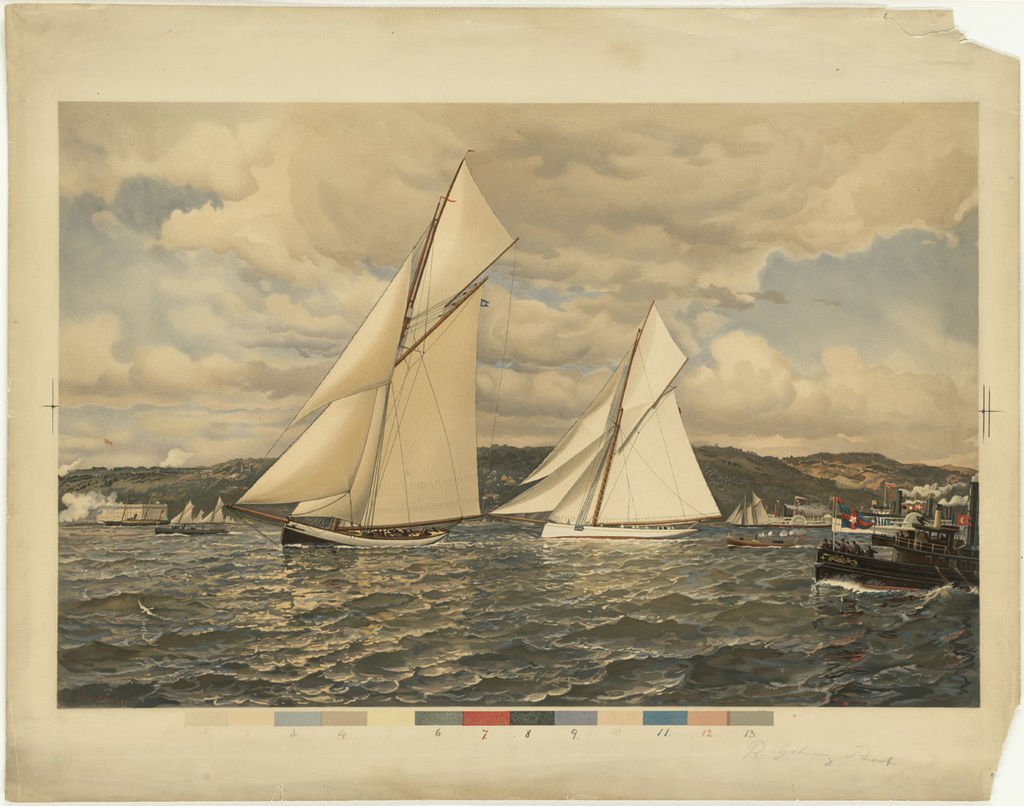
Boat Race - Courtesy of the Boston Public Library

